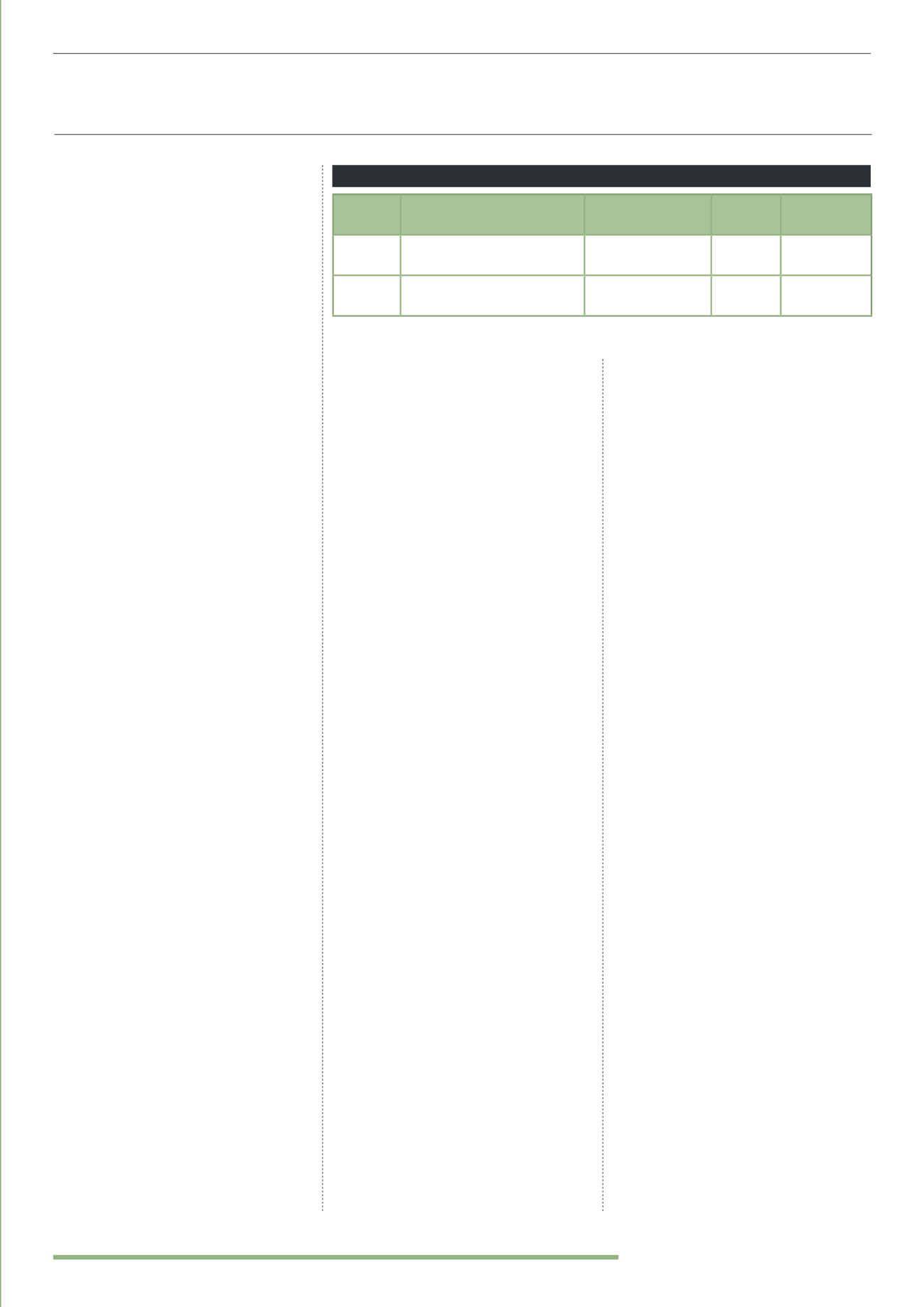
11
Symbol
ETF Name
Index
1 Year
Return
Launch Date
CUT
Guggenheim Timber ETF
Beacon Global
Timber Index
+23.34% 11/09/2007
WOOD
iShares S&P Global Timber &
Forestry Index Fund
S&P Global Timber
& Forestry Index
+12.73% 24/06/2008
TIMBER ETF
S
Source: Morningstar
INVESTMENT OBJECTIVES
Ordinary retail investors who want daily
liquidity, affordable entry levels, low
transaction costs, the assurances that
come with investing in a well regulated
environment and the protections afforded
by the FSCS should stick to mainstream
investments. A number of large, well-
diversified funds will have an allocation to
forestry as part of their holdings. Forestry
has also traditionally been favoured by
pension funds and hedge funds as an
investment. But few of these options give
retail investors direct exposure to the sector.
Investors can gain exposure to the global
forestry sector through exchange traded
funds (ETFs) which follow a global timber
index. The main two timber indexes are
the Beacon Global Timber Index and the
S&P Global Timber & Forestry Index.
Both indexes measure the performance
of companies engaged in the ownership,
management, or upstream supply chain of
forests and timberland. This can include
owning or managing forests and harvesting
trees for timber and other wood-based
products. The main issue with these
indexes is that they only track the very
largest companies and are spread across
a wide range of forestry related practices.
The two largest ETFs are the Guggenheim
Timber ETF and the iShares S&P Global
Timber & Forestry Index Fund.
However, as these ETFs are invested in
the listed equity of companies within the
forestry industry, they still have a high
degree of correlation to the stock market,
which reduces the diversification benefits
of investing in forestry.
Investors who want direct exposure to the
sector are usually looking for higher returns
and greater diversification. This will mean
investing outside of the public markets,
either in an unregulated fund structure or a
direct purchase of land or trees.
Direct investments usually come with
larger up-front financial commitments,
higher transaction costs, lower liquidity
and lower levels of regulatory scrutiny.
These risks can be mitigated by researching
the right opportunities, or added to
INVESTINGINFORESTRY
by investing into speculative forestry
investments in unproven locations. That
isn’t to say that all forestry investments
are bad, but investors must undertake a
large amount of research to identify an
investment that suits their appetite for risk
and capacity for loss.
RETAIL INVESTMENT
OPPORTUNITIES
Forestry investment opportunities
generally consist of the direct purchase
of trees or land on managed plantations.
The tree types available fall into the three
main categories of hardwood (Teak,
Paulownia, Robinia, Eucalyptus & Melina),
softwood (Spruce & Acacia) and grass
(Bamboo). Ownership structures range
from leasehold or freehold title to a piece
of land where trees are grown or, in most
cases, full title and harvest rights to a set
number of trees. The planting, growth and
harvesting of the trees is carried out by a
forestry management company which is
often appointed by the product provider.
LOCATIONS
Investments (plantations) are primarily
located in developing countries, with
a handful of investment opportunities
available in Europe and Australia. The
higher risks associated with investing in
these countries is compensated for by the
potential for very high returns. Investments
are spread across countries in Africa,
Central and South America, Central and
South-East Asia, Australasia and Europe.
INVESTMENT TERMS
Investors can invest into saplings or
standing wood. Sapling investments
can run for up to 24 years and will often
span the entire growth cycle of the trees.
Standing wood investments will often
have much shorter terms than this, with
some providers offering investments of
3-6 years. Forestry is generally considered
a long-term investment, as trees grow
relatively slowly and returns only come
once trees reach a sufficient size.
MINIMUM INVESTMENT REQUIRED
Sapling investments tend to require a low
minimum investment of between £5,000
and £15,000. The investor is paying for the
planting of the trees and the freehold or
leasehold of the land, which in many of
these countries is quite cheap. Standing
wood investments will usually have higher
minimum investments which can range
from £20,000-£50,000. The investor is also
paying for the freehold or leasehold land,
but will pay a premium price for having
more established trees. The price is likely
to vary depending on the age of trees, how
many trees are purchased and how long the
investment is predicted to run for. Product
providers differ on the number of trees
planted per hectare. Some product providers
will replace trees free of charge that perish in
the first three years of the investment.
RETURNS
Returns are paid once the trees can begin
to be harvested and the timber sold on
behalf of the investor. This usually occurs
4-6 years into the investment, and then
at 1-3 year intervals. This is referred to as
thinning, whereby a small number of young
trees are cut down (harvested) and sold
in order to create room for the remaining
trees to continue growing. The main
harvest will be at the end of the investment
term, where the remaining trees are cut
down and sold.
This final harvest is where the bulk of the
investment returns come from, and means
investors have to wait a long time in order
to recoup their initial investment. Returns
(2014)


